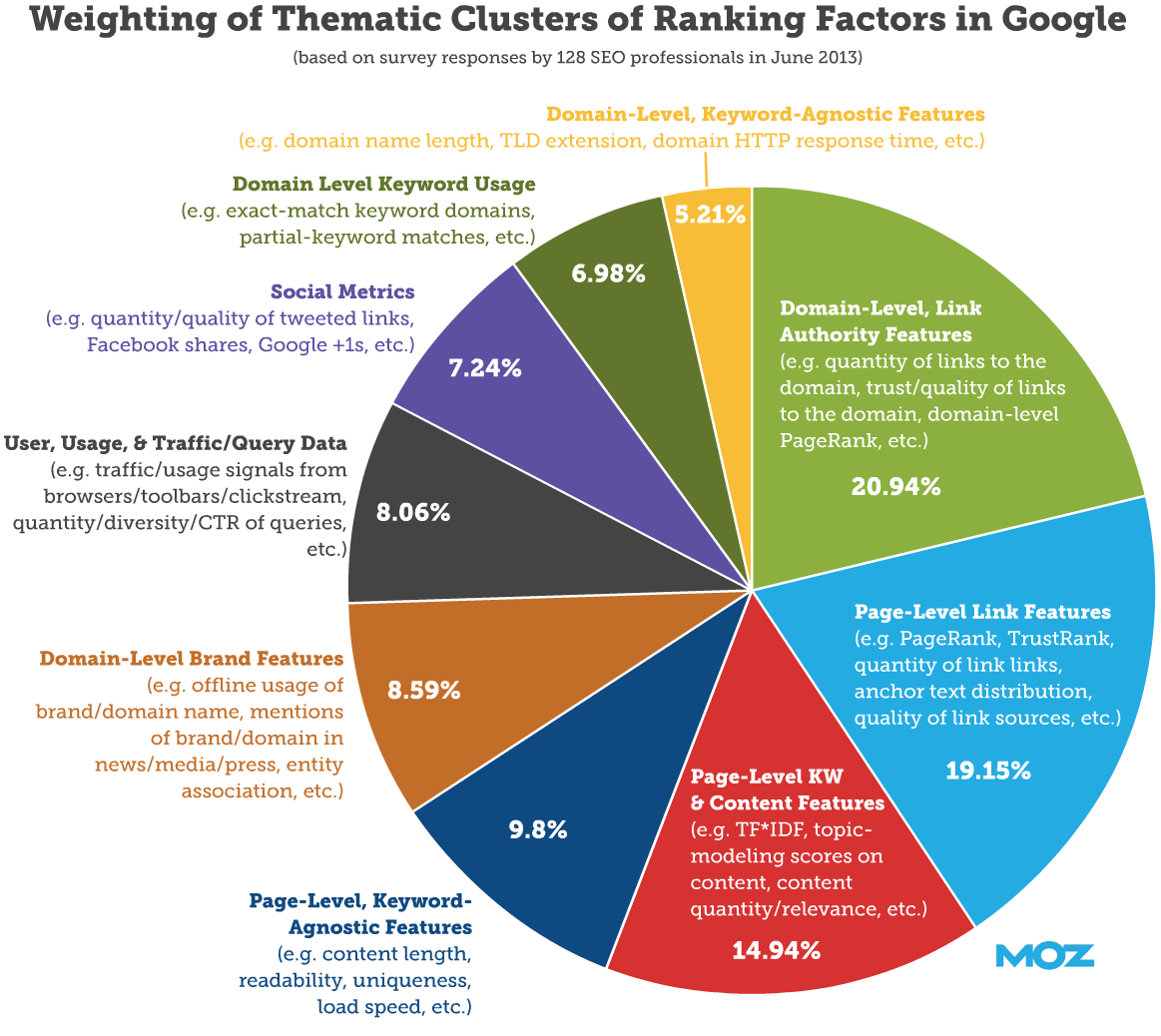5 Tips to Rejuvenate Dull SEO Reports
Add worth to SEO reports with storytelling
Month-to-month SEO reports are an essential part of any SEO method since they provide an outlet to inform clients, reveal ROI, and guide the conversion for upsells.
While SEO reports are essential in many methods, they are generally reduced to boilerplate PDF design templates sent out to clients every month with a generic message. If this explains your SEO reporting method, you're missing out on essential opportunities to keep customers and upsell with thoroughly crafted storytelling methods.
Regardless of who you're working with-- nationwide brands or regional companies-- I have actually found that strong SEO reporting assists ground the client relationship. Consumer service and outcomes have constantly been our bread and butter, and SEO reports assist us reveal how we stand out from the competition, and create long-lasting relationships with our clients.
Make certain to include SEO reports into your routine cadence if you are having a hard time to keep a customer, or you simply desire a method to engage with your customers in a much deeper method. Now, more than ever we need to show customers the worth we give the table.
Let's take an appearance at the things all useful SEO reports need to include, and how you can use storytelling strategies to develop a relationship with your clients, show your strategies' worth, and discover upsell chances today!
1. Organic impressions, clicks, and CTR
While SEO has a broad reach, you require to get the best message to the right individuals if you desire them to click through to your material and convert.
This is why a good SEO report ought to include top-level metrics like organic impressions and clicks. While this details doesn't offer much insight into on-page efficiency, it does offer a jumping-off point for you to talk to your customer about changes in market trends and user behavior.
I like to cover top-level data at the start of each reporting call to set the table for more comprehensive discussions with clients. I have actually used this information to suggest extra work for clients and utilize these metrics to reveal YoY improvement, and validate work throughout specific durations.
I present information from Google Search Console and Google Analytics to help my customers understand how we can affect their website's total efficiency. Here are a couple of points that I discuss based on current click and impressions:
What it indicates: Impressions = how often content appears, clicks = the number of times individuals click SERPs.
Where to discover it: Google Browse Console
When to use it: Identify material and build method. Construct sprints to deal with problem locations. Pages that are performing between 3-12 ought to be optimized, and low CTR must enhance meta, interlinking, and technical considerations.
How to optimize: High impressions + low clicks = update title and meta description. Low impressions = add Frequently Asked Question schema.
Despite the fact that clicks and impressions do not communicate excessive details about a site's performance, you can use this part of your SEO report to ease into upsell chances and reveal your SEO chops when it concerns the wider scope of SEO marketing and how whatever is interconnected.

2. Keyword ranking
Considering that SEO is everything about getting particular pages to rank for target keywords, you need to consist of keyword performance and rankings in your SEO report. I like using keyword information to boost a conversation with my customers around user intent and bringing SEO technique back to their company objectives.
I like utilizing this time to reveal that I understand SEO is more than keywords and Google. At the end of the day, if my SEO technique is not driving qualified traffic and enhancing conversions, then my customers will discover another company.
Keywords are the basis of search engines, and I like to utilize keyword ranking information to tie in the "larger picture", together with specific SEO techniques and push to protect more sales.
Here are a few talking points to think about with keyword performance in my monthly SEO reports and client check-ins:
Program photos of keyword tools like Moz Keyword Tool and Ahrefs to reveal patterns. Tie MOMMY modifications into an SEO report design template to show development and increase each customer call's energy.
Suggest material optimizations, outreach, and other SEO methods to drive target keywords. Tie keyword ranking to your services, outcomes, and your client's service objectives.Run a fast technical SEO audit and content audit to supply new opportunities for additional work. This is a terrific way to enhance your customer's site's performance while also increasing trust and regular monthly earnings.
Keyword rankings give a strong signal around user intent, market patterns, and competitor techniques. You can use keyword rankings in your SEO reports to concentrate on success and move the discussion towards upselling chances to move gears and align your SEO method with your customers' business goals.
3. Explain how individuals engage with your material
SEO methods are generally explained in abstract terms, so it's our task as SEO specialists to connect the dots for clients whenever possible in between SEO metrics and their service objectives.
You probably invest a great deal of time discussing various SEO marketing angles, like the customer journey, website efficiency, and user intent. All of these factors influence how online search engine rank content, and even more notably, all of these aspects affect conversion rates.
SEO is abstract and tough for our customers to understand. That's why we require to include concrete terms, visuals, and descriptions in our reports for continuous education and trust-building procedures.
For example, I handle SEO and material for a big gamer in the shipping industry. This market is very specific niche, however each sale can result in 8-figure deals for my customer. I was able to highlight to the customer about how they could increase leads by expanding their existing material Hub/Spoke design and use their SEO reports to talk them through various aspects of their service like:
Classify material on your site and designate particular metrics and goals for your clients.
Track content based upon subjects and what material moved individuals through the consumer journey.Use Content Drill Down in Google Analytics to show how readers move through the site. This information is important to highlight opportunities to optimize content.
Start a conversation around other SEO strategies like interlinking, blogging, and on-page optimizations.Showing how individuals engage with my customer's site was a key part to increase education, and help picture how your monthly SEO work impacts your client's website. If you can mention a bottleneck in the client journey and deal CRO, interlinking, or on-page optimizations, then you are on your way to build client trust and slide into an upsell chance.
4. Google Analytics occasions
Google Analytics and Google Tag Manager can be used to show how your SEO and CRO methods impact user habits when they reach your site. You can inform your clients about on-page SEO by tracking click particular CTAs throughout private pages.

Among the metrics I focus on when I examine customers' results is how people engage with their CTAs. This means that I have to link Google Tag Manager and Google Analytics to show that our optimizations push more website visitors to valuable pages like contact forms and sales pages.
I just recently ran a little test for a client to reveal them that with some on-page SEO tweaks we could enhance CTR for numerous posts and pages. I recognized a few pages that would show the best results, closed the job, and after a month of screening I was able to include CTA click different pages that I optimized.
After a couple of months of on-page optimizations I can see a big enhancement for CTR and lead generation on their site. Here is a quick screenshot of CTA clicks on the customer's site from the pages/posts I enhanced:
.
This little test was a success and result in ongoing month-to-month optimizations throughout their deep content library. As an outcome, I am able to reveal the effect our on-page optimizations make to their lead quality and bottomline.
This is an ideal example of how we can utilize reports to build relationship, show our understanding, and test concepts with clients. Plus, it can all result in beneficial upsells- but none of this is possible without a great looking and useful report to backup our claims.
While this is not a big part of my SEO reporting process, I try to include metrics around user habits to describe how individuals engage with on-page material. This info can likewise help tie top-level SEO metrics to service objectives, which are considerable parts of the total story I communicate to my clients every month.
5. Add local SEO info.
Local SEO is an important part of an SEO method to drive competent leads and sales for local business owners. You can save a lot of time by using a tool like Moz Local to keep NAP and listings consistent for your clients, and you can use excellent local SEO reporting tools to show the results of your regional SEO tactics.
I have numerous customers that provide regional SEO services. Not just do these services provide instant value to these customers, but the local SEO services likewise supply me with an excellent way to pitch additional services like outreach, page optimizations, and blogging.
While local SEO is not a terrific fit for all of your clients, you can unwrap excellent chances if gold coast marketing you provide sincere services to resolve their needs and present precise information to show your efforts' worth.
Be sure to consist of local SEO metrics in your SEO reports when it makes good sense, and mention the metrics that matter to company owner like phone calls, foot traffic, and driving instructions!
Usage SEO analytics to narrate and develop consumer trust!
